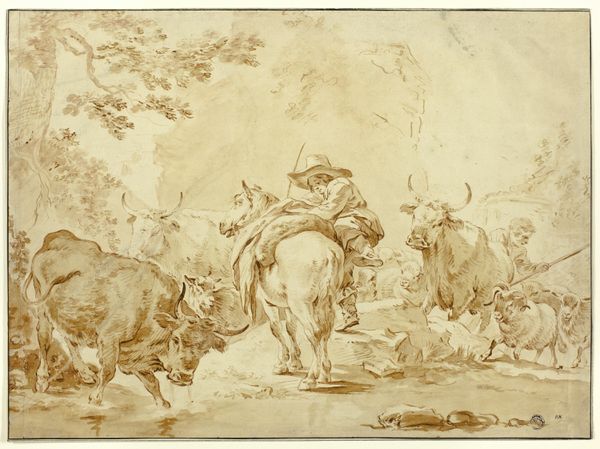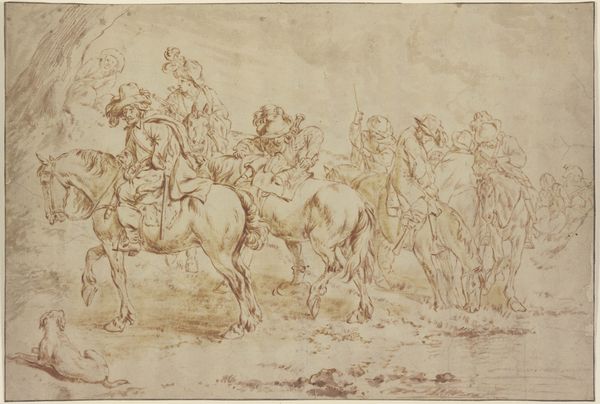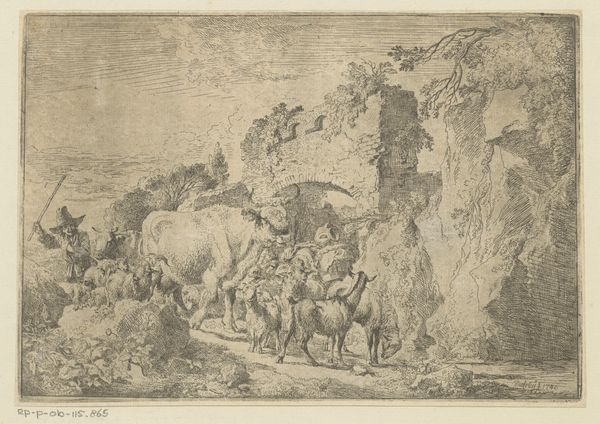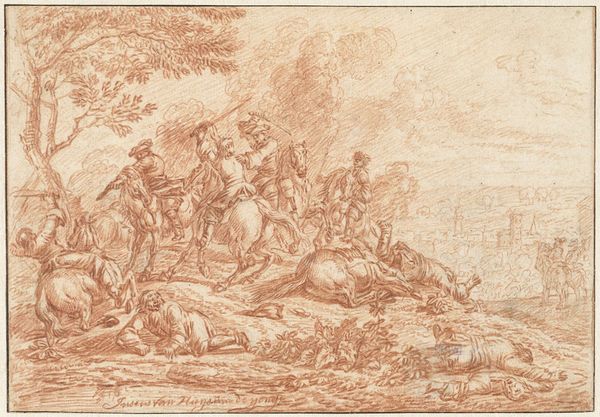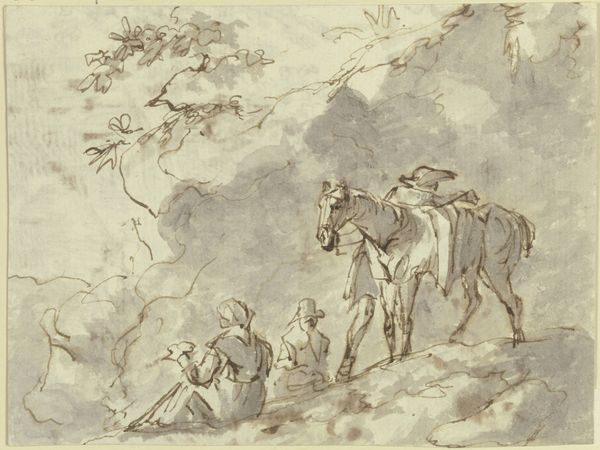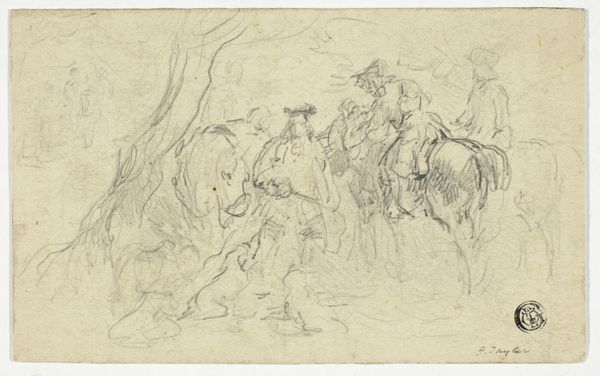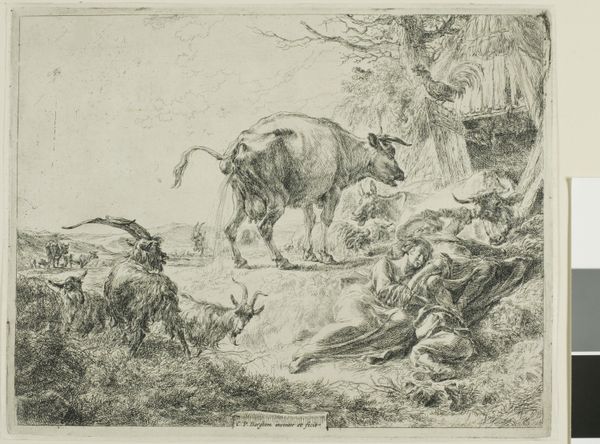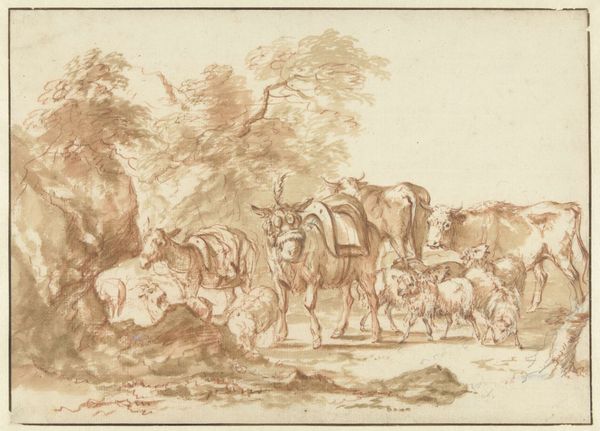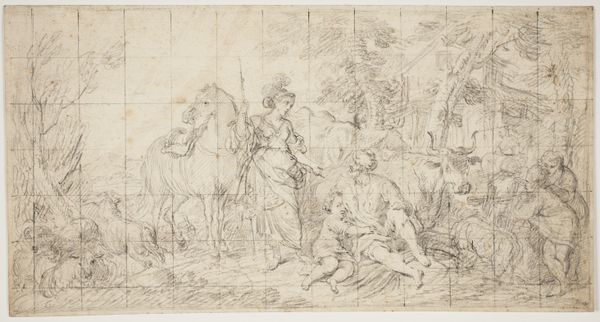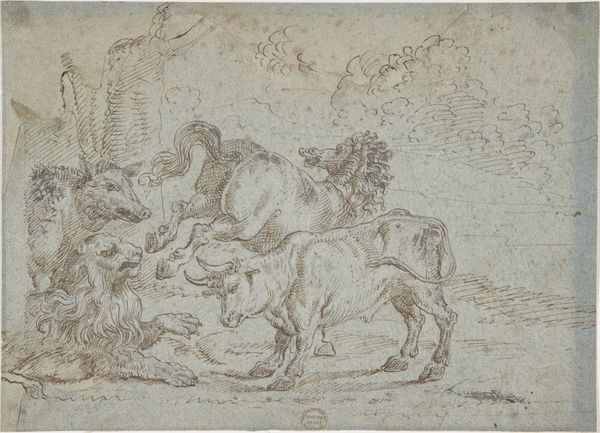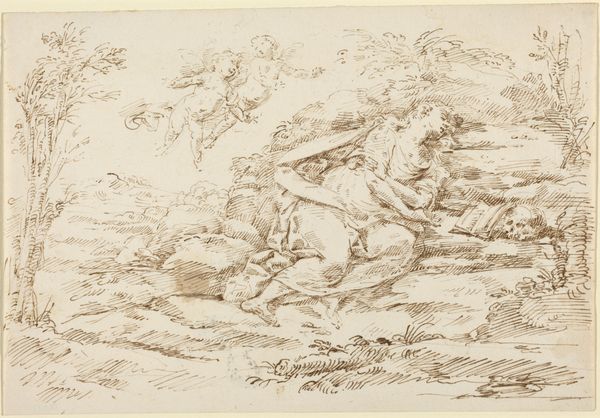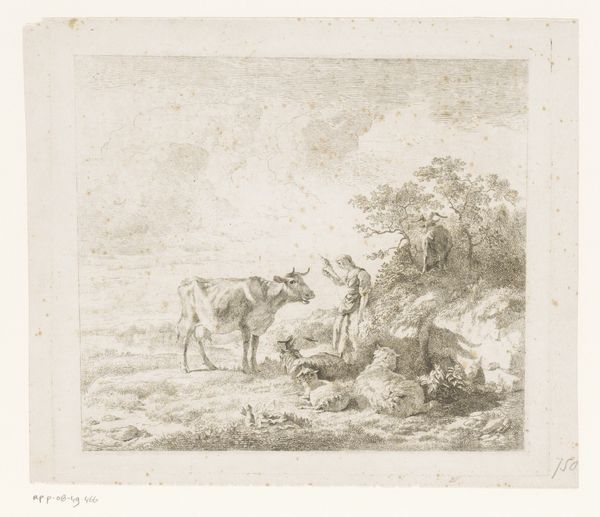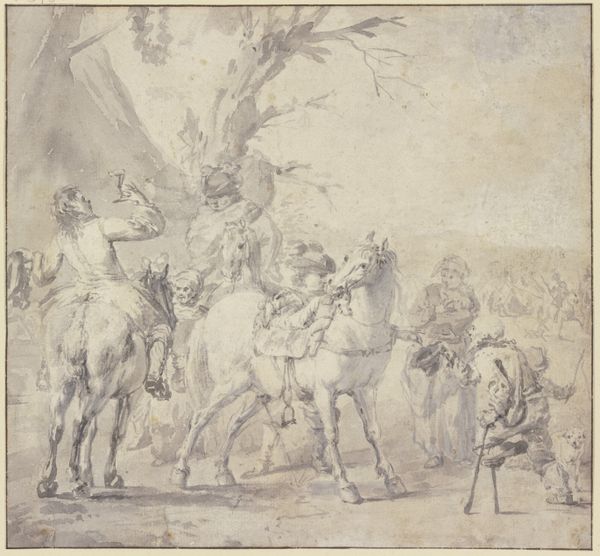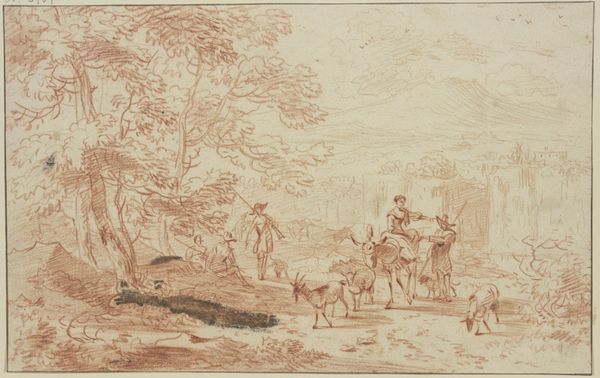
Ein auf einem Ochsen reitender Hirte treibt seine Herde heimwärts
0:00
0:00
drawing, paper, ink
#
drawing
#
baroque
#
ink painting
#
landscape
#
figuration
#
paper
#
ink
#
14_17th-century
Copyright: Public Domain
Editor: This drawing, ink on paper, is titled "Ein auf einem Ochsen reitender Hirte treibt seine Herde heimwärts" by Johann Heinrich Roos, held in the Städel Museum collection. It's an interesting landscape... somewhat faded, though the composition holds together remarkably well. What do you see in the relationships between the figures? Curator: The most apparent structural element is the rhythmic, almost musical, use of line. Roos establishes spatial depth not through tonal variation, but through line weight and density. Notice how the heavier, more confident lines define the ox and rider in the foreground, contrasting with the delicate, almost ephemeral, lines used to suggest the distant landscape. Editor: So the focus is more on the execution of line and its effect? It’s almost like he's composing with the pen itself. Curator: Precisely. The density and directionality create a sense of movement, guiding the viewer’s eye through the composition. Consider, for example, the way the lines describing the trees on the right side mirror, to some extent, the flock towards the left. Editor: Now I see, a balanced distribution of graphic information. I had overlooked that echoing. It pulls it all together even more than I initially thought. Curator: The medium itself, the relative immediacy of ink, allows for this fluid capture. It seems Roos sought to dissect and articulate movement using simple contrasts: thick versus thin, dense versus sparse, near versus far. Editor: Thanks, I now appreciate that it isn’t about precise representation but about how Roos organizes form to create space. Curator: Indeed. And by focusing on these formal elements, we can engage with the artist's creative choices, almost independent of subject. The true subject, one might argue, is the interplay of line and form.
Comments
No comments
Be the first to comment and join the conversation on the ultimate creative platform.
